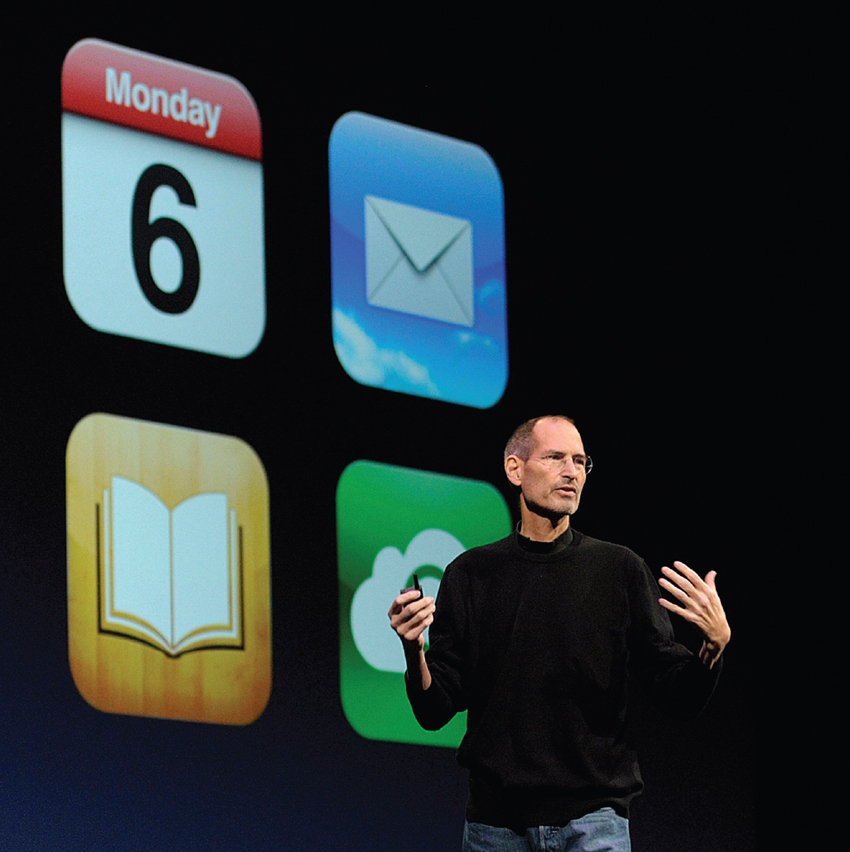Chapter 13
Everything Apple produces—iPhones, iPads, Mac computers, and even Apple TV—reflects the extraordinary mind of the company’s cofounder, Steve Jobs. His vision of personal computing guided Apple’s success as it be-came one of the most profitable technology companies in the world. But Jobs also left his stamp on another thing Apple excels at—using compelling live and online presentations to introduce and demonstrate new products.
Unlike most companies that use television ads and social media to introduce products, Apple consistently turns new-product announcements into captivating public-speaking events. As Forbes magazine contributor Carmine Gallow (2012) describes:
Like most people I don’t know what Apple is going to announce before they release the product to the public. But I do know exactly how they will craft and deliver the presentation behind the product announcement. I know because Steve Jobs created the template—the model—for a great presentation and nobody at Apple strays from it.
When Steve Jobs presented, he strolled comfortably around the stage, often teasing his audience and building their anticipation about the newest Apple product offerings. He integrated visually stunning graphics to highlight sales figures and company achievements. Other Apple employees frequently joined Jobs onstage to demonstrate new products, their segments appearing seamless and natural. What the audience did not see, however, was the rigorous preparation that went into each well-scripted and well-choreographed presentation.
Former Apple product manager Mike Evangelist had firsthand experience with the grueling effort Jobs put into getting ready for his presentations.1 Before sharing the stage with Jobs during one Macworld Conference, Evangelist was required to spend hours practicing under Jobs’s watchful eye. Jobs also gave him pointed criticism—even though Evangelist’s contribution to the program would last only five minutes.
Apple continues to follow the same high standards and invest the same rigor in preparing its product presentations today. Executives and designers like Tim Cook and Jony Ive spend considerable time thinking through which new products and services to feature, developing visual aids, planning ways of engaging the audience, and rehearsing the presentation. The presentations are carefully designed and prepared because Apple knows the importance of connecting with its audience—both those who attend in person and the hundreds of thousands who watch the product announcements online.

Few people ever give a speech that attracts as much media scrutiny as does an Apple product announcement. But in the course of your life, you will inevitably give some presentations. Knowing how to properly prepare for such occasions will help you achieve success.
Public speaking is the process of preparing and delivering a message to an audience to achieve a specific purpose. Perhaps you’ll deliver a project status briefing at work, or make a presentation asking a group of parents to volunteer for after-school activities at your child’s school. At the very least, you will likely give a speech for this class. This idea makes many people nervous, even though the speech may be days or weeks away. Don’t worry if you’re feeling unsettled at the mere idea of giving a speech; it’s perfectly normal to feel this way. We’ll help out by discussing strategies for coping with public-speaking anxiety (pages 386–388). For now, try to relax, and take comfort in the fact that you already know many of the communication principles and skills that support strong speech preparation. In this chapter, you’ll learn:
- The five steps in speech preparation
- How to select your speech topic
- Ideas for analyzing your audience and adapting your topic to them
- How to develop a strategy for researching your speech
- Ways to conduct your research and evaluate your resources